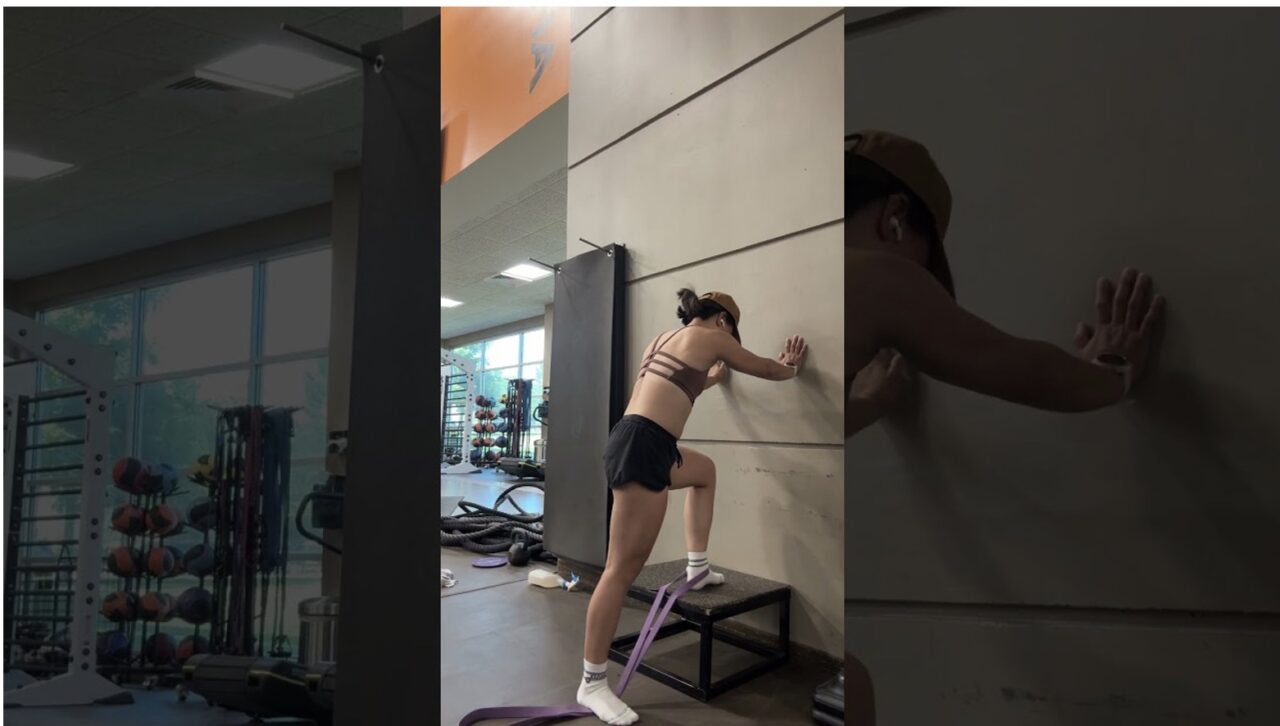If you’ve ever tried stretching or foam rolling only to still feel stiff, limited, or “stuck,” there’s a reason. While those tools can be helpful, they often miss a key piece of the puzzle: the joint capsule.
That’s where banded joint mobilizations come in.
Using a thick resistance band (like a pull-up band) you can create targeted joint traction and glides that improve how your joints move within their sockets. This isn’t just about flexibility or muscle release; this is about restoring actual joint mechanics that impact everything from squatting and running to yoga and lifting overhead.
And you don’t need access to a rig, squat rack, or pull-up bar. With a simple door anchor, you can turn any space into a mobility station while you’re on the go.
What Makes Joint Mobilizations Different?
Let’s break down how banded mobilizations compare to more traditional mobility tools:
| Technique | What It Targets | What It Does Well | What It Misses |
| Static Stretching | Muscle length | Improves flexibility | Doesn’t impact joint glide or capsule stiffness |
| Foam Rolling | Fascia and muscle tension | Enhances blood flow and soft tissue release | Doesn’t create joint space or traction |
| Banded Joint Mobilizations | Joint capsule and accessory motion | Restores movement at the joint level | Requires knowledge of direction and setup |
With a pull-up band and thoughtful positioning, you can gently pull the joint into better alignment or glide, allowing you to move more freely and efficiently. Plus, you’re more efficient targeting more structures with the band.
Featured Banded Mobilizations
These are some of the most effective self-mobilizations we use regularly in the clinic and with active patients. We’ll walk you through some of the most common ones we use and show you how to do them safely at home using a door anchor.
Shoulder: Glenohumeral Mobilizations
Use the door anchor at shoulder height, loop the band around the arm near the armpit, and step away to create gentle tension.
- Distraction: Helps decompress the shoulder joint. Great for anyone dealing with tightness after overhead workouts or stiffness from poor posture.
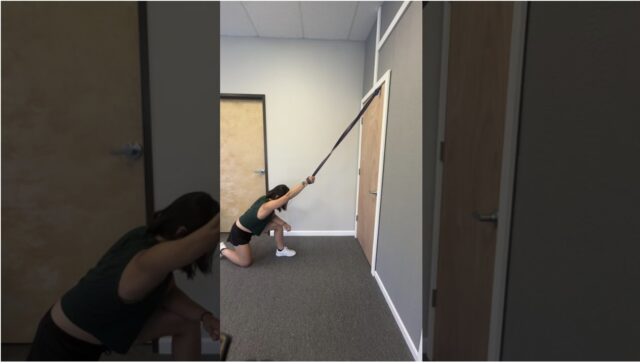
Posterior Glide: Enhances flexion and internal rotation. Excellent for front rack prep, overhead reach, or improving posture-related restrictions.
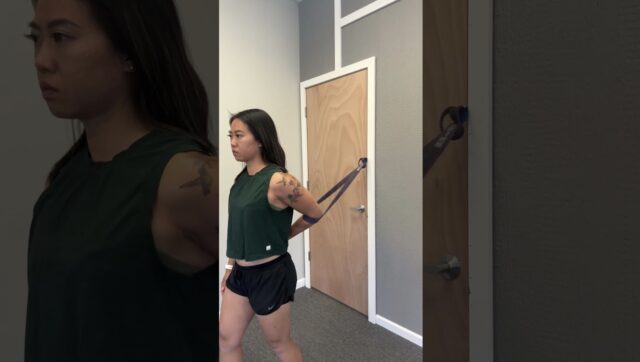
Hip: Femoroacetabular Joint Mobilizations
Anchor the band low to the ground and across from the hip you’re mobilizing. Use a towel or pad under your knee if kneeling.
Distraction: Ideal for those experiencing pinching in squats or hip flexion. Helps decompress the joint and reduce capsular restrictions.
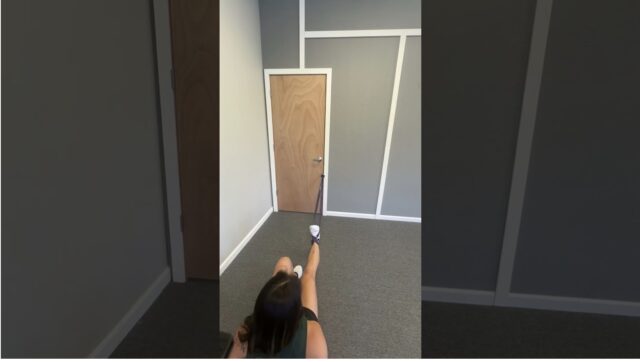
Anterior Glide: Improves hip extension—essential for walking, running, and bridging.
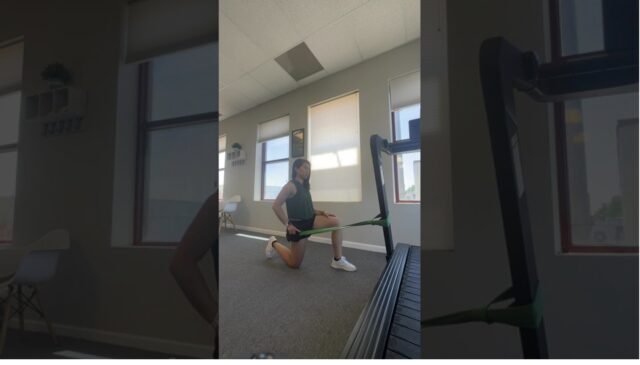
Lateral Glide: Helps restore internal and external rotation. A great option for athletes, runners, and yoga practioners.
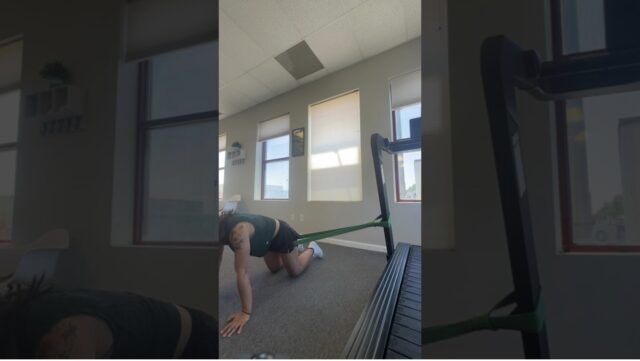
Ankle: Talocrural Joint Mobilization
Anchor the band low behind you and loop it just above your ankle bones. Step forward into a deep lunge to create the glide.
Anterior Glide: Critical for improving dorsiflexion and depth in squats, lunges, and running stride. Helps the shin glide over the foot properly.
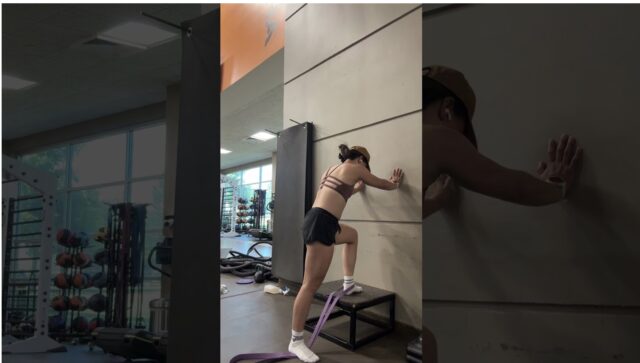
Elbow: Humeroulnar Joint Mobilization
Anchor the band at or just below elbow height, loop it around your forearm just below the crease of your elbow, and step back to create tension. Gently lean away while bending and straightening your elbow, or explore light forearm rotation to enhance the mobilization effect.
- Distraction with Movement: Helps relieve stiffness and discomfort in the elbow during pushing movements like push-ups, bench press, or front rack holds. Creates space in the joint to reduce compression and improve overall elbow extension and flexion.

Spine: Banded Cat Cows
Anchor the band low and loop it around your hips. Start in a quadruped position, moving slowly through cat (spinal flexion) and cow (spinal extension), focusing on initiating movement from the tailbone up through the spine. Let the band guide your hips slightly backward at the top of cat to accentuate the stretch.
- Dynamic Mobilization for Thoracic and Lumbar Mobility
A great prep drill for yoga, lifting, or easing into spinal movement after sitting. The band provides gentle resistance to enhance spinal segmentation and increase body awareness.
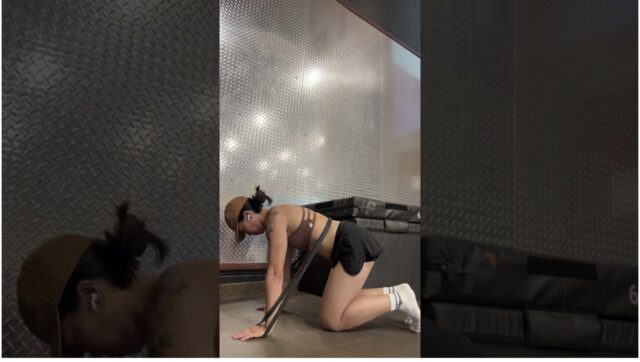
Using a Door Anchor
The convenience of a door anchor makes these drills possible anywhere—from home to hotel room. Simply:
- Thread the pull-up band through the anchor.
- Close the door securely with the anchor on the opposite side.
- Adjust band height depending on the joint.
- Step into tension gradually and hold for 30–60 seconds while breathing and lightly moving.
When Should You Use These Mobilizations?
- Before a workout to improve active range
- After training to decompress joints
- On recovery days to reset alignment
- During physical therapy to reinforce joint-specific goals
Consistency is key, and even just 5–10 minutes a few times per week can make a meaningful difference in how your body moves and feels. Depending on your physical therapist’s recommendations, a simple 3 sets of 30 second holds will get you the minimum dosage for tissue changes.
Purchase the Bands & Setup Tools
Looking to get started with your own banded joint mobilizations at home? These are the exact tools I recommend and use regularly in the clinic and during my own mobility work:
- Top Choice – REP Fitness Pull-Up Bands (Bundle Pack)
These bands are durable, high quality, and come in a range of resistance levels, making them ideal for targeting everything from shoulder and hip joints to the ankle and wrist.
Purchase the REP Fitness Bands - Budget-Friendly Option
If you’re just getting started or want a more affordable set, this pack still offers enough resistance options for most banded mobility drills.
Purchase the Budget-Friendly Bands - Door Anchor Attachments
Turn any door into a functional mobility station. These anchors allow you to set up your bands at different heights depending on the joint you’re mobilizing:
Simple Door Anchor – Option 1
Simple Door Anchor – Option 2 - Multi-Anchor Door System
For added versatility, this system lets you secure bands at multiple points along the door—perfect for alternating between shoulder, hip, and ankle mobilizations without constant setup changes.
Purchase the Multi-Hook Door Anchor
Ready to Move Better?
If you’re struggling with mobility, stiffness, or joint discomfort, these banded joint mobilizations might be the missing link in your routine. Remember they’re most effective when tailored to your specific needs.
We offer personalized sessions where we assess your movement and guide you through safe and effective mobility work that supports your goals whether that’s pain relief, injury prevention, or better performance.
Book a session with us today to receive personalized, hands-on support and create a mobility plan that fits your needs. Our clinicians at MEND Boulder and Lafayette specialize in diagnosing and treating injuries using natural, evidence-based approaches without relying on injections, medications, or unnecessary interventions. We’re here to help you move better and live pain-free.

